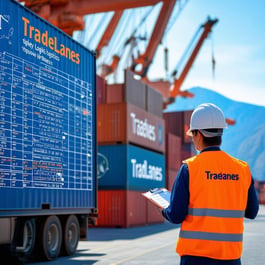Introduction:
Managing Early Return Dates (ERDs) is critical for exporters aiming to streamline operations and avoid costly disruptions. The Vessel Schedule Impact Report 2023 highlights the growing complexities around ERDs and provides actionable insights to address common challenges exporters face.
Why Early Return Dates Matter
Early Return Dates mark the earliest day exporters can deliver their containers to a port or terminal for shipment. Properly managing ERDs ensures:
- Avoiding Fees: Late delivery can lead to demurrage or detention charges.
- Reducing Uncertainty: Accurate ERDs prevent scheduling conflicts and costly delays.
- Streamlined Planning: Exporters can align drayage providers and terminal schedules efficiently.
Common Challenges with ERDs
According to the Vessel Schedule Impact Report 2023, exporters face these major challenges:
- Frequent ERD Changes: These shifts force exporters to re-coordinate drayage schedules.
- Data Discrepancies: Conflicting information between carriers and terminals complicates planning.
- ERD-Related Fees: Unanticipated changes often result in additional storage or handling charges.
Strategies for Managing ERDs
Exporters can mitigate ERD-related risks by:
- Leveraging Technology: Platforms like TradeLanes provide real-time updates on ERD changes, keeping exporters informed and agile.
- Centralizing Data: Consolidating carrier and terminal schedules into a single source of truth reduces confusion.
- Proactive Communication: Establishing clear communication channels with carriers and terminals ensures timely updates.
Conclusion
With the right tools and strategies, managing Early Return Dates doesn’t have to be a challenge. By staying proactive and using advanced logistics platforms like TradeLanes, exporters can navigate ERD complexities with ease.




Leave a Comment